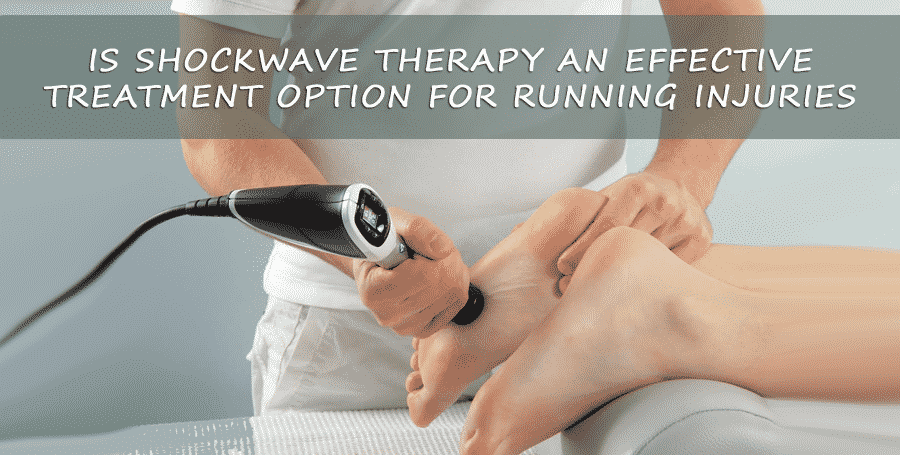Despite the obvious drawbacks, now is a rather exciting time to be a runner with an injury needing treatment. Our understanding of injury causes and treatments still has a long ways to go, but in the past several years, medical knowledge on running injuries has accelerated dramatically.
New exercises, techniques, and treatments are being discovered, tested, and evaluated for use in treating a wide range of the most common running injuries. Injuries like a labral tear, which would have been a career-ender not too long ago, can now be identified and repaired with good success.
But new, groundbreaking treatments are inevitably accompanied by unproven gimmicks riding on the coattails of advancing science. These are usually supported by some small-scale, poorly-designed studies, but don’t hold up when examined by the gold standard for injury treatments—the placebo-controlled randomized trial. Until several of these top-tier studies have been rolled out and reviewed by other scientists, it can be hard to tell whether a new treatment is worth looking into.
Today, we’ll be taking a look at one new injury treatment in particular: extracorporeal shockwave therapy, or ESWT, and examining how it holds up to the research.
Shockwave therapy explained
Shockwave therapy has its roots in treating kidney stones: high-energy ultrasonic waves emitted by a machine were used to break down the hard calcium deposits that cause kidney stones. It wasn’t long until ultrasonic shockwaves were researched as possible treatments for other conditions related to calcium deposits, like calcific shoulder tendonitis.
But more relevant to our interests, at some point, researchers began to investigate the usefulness of shockwave therapy in tendon injuries not associated with calcium buildups. This was probably around the time when doctors were beginning to understand that chronic tendon and fascia injuries, like Achilles tendonitis, patellar tendonitis, and plantar fasciitis, are caused by damage and impaired healing in the fibers of the tendon or fascia, not just by general inflammation. Shockwaves, it was thought, could induce a controlled amount of stress to an injured area, restarting the healing process.
Early studies were promising: small-scale investigations found that extracorporeal shockwave therapy was beneficial in patients with chronic cases of Achilles tendonitis, patellar tendonitis, and plantar fasciitis. But it would take larger clinical studies and review studies to determine how effective ESWT really is when it comes to treating these injuries.
Some early review studies were skeptical—for example, a 2001 paper by R. Böddeker and others at Phillips-University in Germany noted that clinical trials on ESWT for plantar fasciitis to date were poorly designed and lacked control groups. But several years later, more positive studies began to be published.
The studies on ESWT and plantar fasciitis
The first major study we will examine was published in 2006 by D. Scot Malay and colleagues. This study was a double-blinded placebo-controlled trial, meaning that neither the participants nor the doctors examining the patients knew who received the real ESWT treatment and who received a “sham” placebo session of shockwave therapy. All of the participants had chronic plantar fasciitis which did not respond to conservative treatment.
While the control group did indeed reduce their heel pain during the three-month follow-up period of the study, the experimental group, who received real shockwave therapy, improved significantly more, as measured both by the patients’ own assessments and by a doctor.
Further, the authors write that there were no adverse outcomes related to the shockwave therapy, even after following the subjects for a year after the treatment. This is important because surgery—one alternative treatment for patients with chronic, recalcitrant plantar fasciitis—carries a substantial risk of complications.
The efficacy of ESWT for treating plantar fasciitis was confirmed in a 2007 review by Ronald De Vera Barredo, Dale Menna, and James Farris at Tennessee State University and Arkansas State University. In a review study on treatments for plantar fasciitis, they write,
“ESWT was an effective treatment for chronic plantar fasciitis, in particular high-energy ESWT, given the relatively higher success rates and quicker resolution of symptoms when compared with low-energy ESWT.”
ESWT and treatment of patellar tendonitis
Extracorporeal shockwave therapy is similarly supported for treating patellar tendonitis.
A study published in 2008 by three researchers at the University of Groningen in the Netherlands reviewed seven trials of ESWT for patellar tendonitis. While the particulars of each study were too diverse to develop any agreement on ideal treatment parameters, such as the intensity of the shockwaves or the number of shockwaves delivered, the authors estimated that about 75% of patients with patellar tendonitis would see improvement after treatment with ESWT.
Additionally, no adverse effects or complications were identified, leading the authors to recommend additional research into shockwave therapy not only as an alternative to surgery in chronic cases, but as a first- or second-line treatment for less severe cases of patellar tendonitis.
ESWT and achilles tendonitis
When it comes to Achilles tendonitis, there are some randomized trials demonstrating success, but others have found shockwave therapy to be no more helpful than a sham treatment.
No major review study has yet endorsed ESWT as a clearly beneficial treatment for Achilles tendonitis, though a 2009 review by Robert Magnussen, Warren Dunn, and A. Brian Thomson of Vanderbilt University left open the possibility that extracorporeal shockwave therapy could become a useful noninvasive treatment for Achilles tendonitis, calling for more studies to be done. There is no consensus on treatment specifics when using shockwave therapy for Achilles tendonitis, like energy level and number of treatments, making comparing studies challenging.
Should you look at ESWT as a treatment option for chronic injury?
In all, extracorporeal shockwave therapy at least appears to do no significant harm, at least in the 1-3 year followups of studies to date. It is quite new, and treatment protocols have not been standardized. For this reason, it is hard for researchers to quantify how useful of a treatment it is.
Regardless, studies have shown that there is good evidence to believe that ESWT is a helpful treatment option for patellar tendonitis and plantar fasciitis; evidence for its use in Achilles tendonitis is equivocal.
Realistically, it may take five or 10 more years for doctors and researchers to develop coherent guidelines for who should get shockwave therapy, which injuries it is appropriate for, and the energy intensities and frequencies of the individual treatment sessions.
Until then, you should still think of ESWT as an experimental treatment for chronic tendon and fascia injuries that don’t respond to traditional conservative treatment. If you’ve had one of these injuries for several months and have not improved with the best mainstream treatments like eccentric exercises, specific stretches, or custom orthotics, you could consider talking to your doctor about shockwave therapy.
It’s unlikely that your insurance company will cover it, and you should see a doctor you trust—given the lack of universally agreed-upon treatment protocols, your probability of having success may also depend on the experience and knowledge of the doctor administering the treatment. And there’s no doubt a lot of money to be made by playing up the hype around shockwave therapy, so make sure you and your doctor understand that it is still very much an experimental treatment, not a staple of mainstream injury treatment or a miracle cure-all.
To cap off our post, here’s a great infographic from our friends at Vennhealthcare






3 Responses
Have you seen anything about this therapy for posterior tibial tendonitis, my personal bugaboo? I’ve got custom orthotics, stretch, do trigger point and other such therapy, get ART frequently and am starting to work on Wharton towel curls. Yet, it nags (years after first bad injury). I would love to find something that actually heals it – or even just helps it significantly!
Also, are there any doc/practitioner certifications so that we can try to find legit practitioners?
thanks
Anything new here? I’m considering ESWT for some scarring on my Achilles that cause bursitis.Thanks!
My husband did this procedure 6 years ago and the problem is just beginning to reoccur.
Since then we have known at least 2 people who have been through the regular surgery with incision and have had to redo the procedure after a year or so. This option of treatment has been quite effective as an alternative to the surgical procedures.